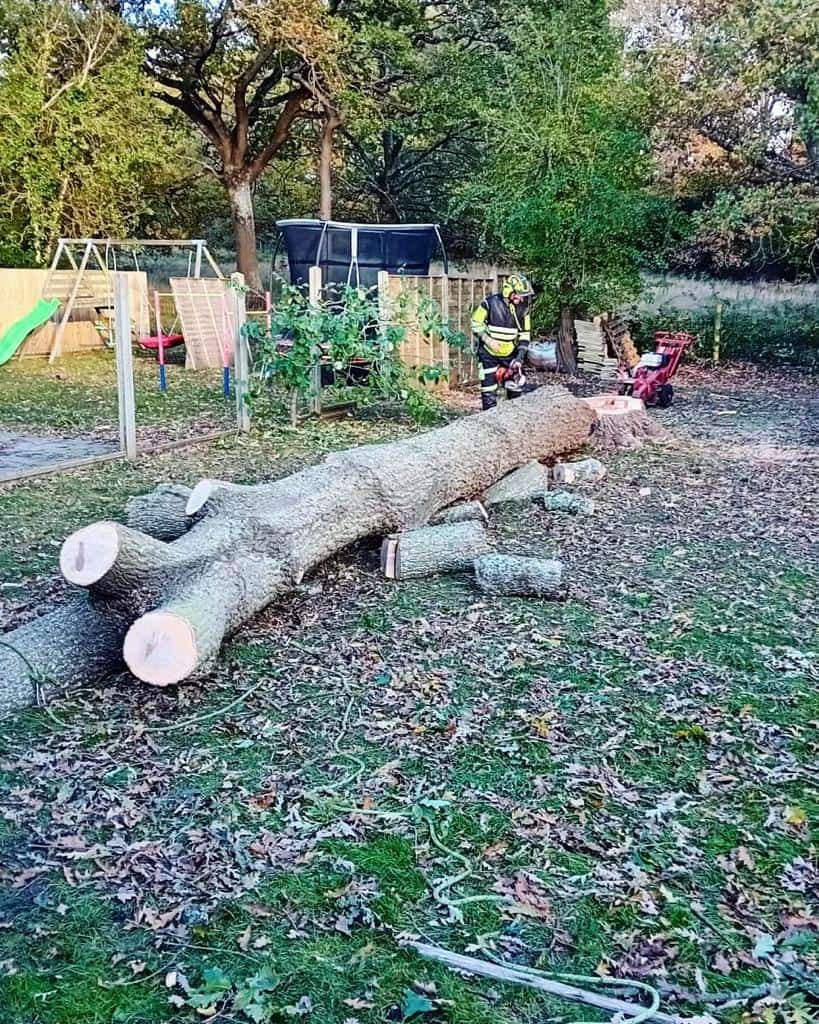Properly trimming young trees is essential for their healthy development and longevity. Correct pruning techniques not only promote growth but also help shape the tree into a strong and attractive structure. At LM Tree Surgery Havant, we specialise in tree care and understand the importance of nurturing young trees through careful trimming. Here are some essential tips for safely shaping your young trees.
1. Understand the Purpose of Trimming
Before you begin trimming, it’s vital to understand why you are doing it.
- Promoting Healthy Growth: Trimming helps remove dead or damaged branches, allowing the tree to allocate resources to healthier growth. It can also encourage branching, leading to a fuller canopy.
- Shaping for Stability: Early shaping helps create a strong structure, which is crucial for the tree’s long-term health. A well-shaped tree is less likely to suffer from structural weaknesses that can lead to breakage later on.
2. Timing is Key
The timing of your trimming can significantly affect the tree’s response to pruning.
- Best Seasons for Pruning: Late winter or early spring is generally the best time to trim young trees before new growth begins. This timing allows the tree to heal quickly and encourages healthy growth as the weather warms.
- Avoiding Dormant Seasons: While some trees can be pruned in late summer or autumn, avoid trimming during the dormant season, as this can lead to increased stress on the tree.
3. Use the Right Tools
Having the right tools is essential for effective and safe pruning.
- Sharp Pruning Shears: Ensure your shears are sharp and clean. Dull tools can cause jagged cuts, which can harm the tree. Clean tools help prevent the spread of disease.
- Loppers and Saws: For thicker branches, use loppers or a pruning saw. Make sure they are suitable for the size of branches you intend to trim.
4. Follow Proper Pruning Techniques
Using correct pruning techniques is crucial for the health of young trees.
- Cut at the Right Angle: Always make cuts at a slight angle to promote water runoff and prevent moisture from pooling on the cut surface, which can lead to rot.
- Avoid Topping: Never top a tree by cutting off the leading shoot. This can harm the tree’s natural shape and lead to an unhealthy structure.
- Focus on the Canopy: When shaping the tree, aim to develop a balanced canopy. Remove any crossing branches that could rub against each other, as this can cause wounds that invite pests and disease.
5. Know When to Seek Professional Help
While DIY trimming can be beneficial, there are times when you should consult a professional.
- Complex Shapes: If you’re unsure about how to shape a particular tree or if it has multiple branches growing at odd angles, a professional tree surgeon can provide expert guidance.
- Health Concerns: If the tree shows signs of disease or distress, it’s essential to have it evaluated by a professional. Proper diagnosis and treatment can save the tree and promote healthy growth.
Conclusion
Trimming young trees is a crucial part of ensuring their healthy development and long-term stability. By understanding the purpose of trimming, timing your cuts appropriately, using the right tools, and applying proper techniques, you can shape your trees into strong and beautiful specimens.
If you’re in Havant, Hampshire, and need professional advice or assistance with trimming young trees, contact LM Tree Surgery Havant today. Our experienced team is dedicated to providing high-quality tree care services tailored to your specific needs. Let us help you nurture your young trees into healthy, thriving additions to your landscape.
Call us on: 023 8001 2385
Click here to find out more about LM Tree Surgery Havant
Click here to complete our contact form and see how we can help with your trees needs.

